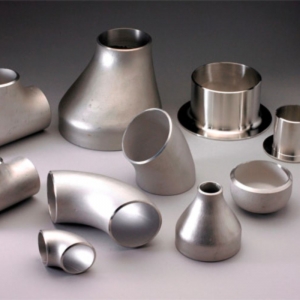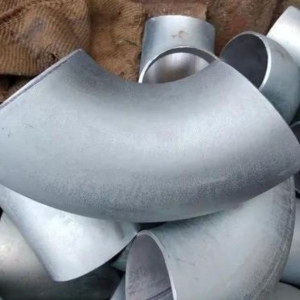Manilaxmi Overseas is one of the leading Pipe Fittings Manufacturer In Hyderabad.Pipe fittings may not be the most glamorous subject, but they are the unsung heroes of plumbing and piping systems. These small, unassuming components play a crucial role in connecting and directing fluids, gases, and even solids in a wide range of industries and applications. In this blog, we'll delve into the world of pipe fittings, exploring their various types, materials, and the many uses they serve.
Types of Pipe Fittings
Elbow Fittings:
Elbows are one of the most common types of pipe fittings. They come in various angles, with 90-degree and 45-degree elbows being the most popular. These fittings are used to change the direction of flow in a pipe system, allowing for efficient navigation around obstacles or corners.
Tee Fittings:
Tee fittings, as the name suggests, resemble the letter "T" and are used to create branches in a pipeline. They allow fluids to flow in three directions, making them essential in distribution systems.
Reducer Fittings:
Reducer fittings are used to connect pipes of different diameters. They come in two main types: concentric and eccentric reducers. Concentric reducers maintain a straight centerline, while eccentric reducers offset the centerline to manage fluid level changes.
Coupling Fittings:
Couplings are used to join two pipes together, creating a continuous flow path. They come in various materials and designs, depending on the application's requirements.
Cross Fittings:
Cross fittings have four openings at right angles to each other, allowing fluids to flow in four directions. These fittings are commonly used in fire protection and plumbing systems.
Union Fittings:
Unions are essential for pipe systems that require regular maintenance or disassembly. They allow for easy separation of pipes without the need for extensive tools or cutting.
Nipple Fittings:
Nipple fittings are short lengths of pipe with male threads at both ends. They are used for extending pipe runs and connecting different components in a system.
Cap Fittings:
Caps are used to close the end of a pipe, ensuring that no fluids or debris enter the system. They are commonly used at the end of dead-end pipes or as protective covers.
Materials of Pipe Fittings
Pipe fittings come in various materials, each suited to specific applications. The choice of material depends on factors such as the fluid or gas being transported, temperature, pressure, and corrosion resistance. Common materials include:
PVC (Polyvinyl Chloride):
PVC fittings are widely used in residential plumbing systems due to their affordability and resistance to corrosion and chemical reactions. They are commonly used for water supply lines and drainage.
CPVC (Chlorinated Polyvinyl Chloride):
CPVC fittings are an upgraded version of PVC, suitable for hot water applications. They are often used in commercial and industrial settings.
Copper:
Copper fittings are known for their durability, corrosion resistance, and ability to handle high temperatures. They are commonly used in potable water systems.
Stainless Steel:
Stainless steel fittings are highly resistant to corrosion, making them suitable for a wide range of applications, including those involving aggressive chemicals and high-temperature fluids.
Brass:
Brass fittings are prized for their corrosion resistance and aesthetic appeal. They are commonly used in water, gas, and hydraulic systems.
Carbon Steel:
Carbon steel fittings are known for their strength and durability, making them ideal for high-pressure applications in industries like oil and gas.
Applications of Pipe Fittings
Plumbing:
Pipe fittings are an integral part of residential and commercial plumbing systems. They ensure the safe and efficient transport of water and sewage.
Heating, Ventilation, and Air Conditioning (HVAC):
In HVAC systems, pipe fittings are used to circulate hot and cold water, refrigerants, and air. They help regulate temperature and maintain indoor air quality.
Chemical Processing:
Pipe fittings in materials like stainless steel and PVC play a vital role in transporting chemicals within industrial plants, where corrosion resistance is essential.
Oil and Gas Industry:
The oil and gas sector relies on pipe fittings, especially those made from carbon steel, to transport crude oil, natural gas, and other hydrocarbons from extraction sites to processing facilities and distribution networks.
Fire Protection:
Cross fittings and other specialized components are crucial for fire protection systems, ensuring the swift and effective delivery of water or fire suppression agents in emergency situations.
Food and Beverage:
The food and beverage industry uses stainless steel and sanitary fittings to maintain hygiene standards and transport food products safely.
Petrochemical Industry:
Pipe fittings are used in petrochemical facilities to transport various chemicals, including acids and solvents.
Pipe Fittings Manufacturer In Hyderabad | Manilaxmi Overseas
Manilaxmi Overseas is a top Pipe Fittings Manufacturer In Hyderabad as well as Pipe Fittings Manufacturer in India. As a Pipe Fittings Manufacturers , Our products are used in various industries.
Our Pipe Fittings is produced by top Pipe Fittings Manufacturers In Hyderabad using high-quality supplies to ensure long-term performance and durability. Our products are produced to fulfil a wide range of industrial applications and needs, as Pipe Fittings Suppliers In Hyderabad.
As a Pipe Fitting Suppliers, we believe that our customers should benefit fully from our innovative products which are available in various cities, Pipe Fittings Supplier in Mumbai and Pipe Fittings Supplier in Bangalore.
Conclusion
Pipe fittings may seem like small and inconspicuous components, but they are the backbone of plumbing and fluid transport systems across various industries. Whether you're installing a new plumbing system in your home or managing complex industrial processes, understanding the types and materials of pipe fittings, as well as their diverse applications, is crucial for ensuring the smooth and efficient flow of fluids, gases, and solids within your system. These unsung heroes deserve recognition for their vital role in maintaining the world's infrastructure and keeping it running smoothly.




